There are monsters in the deep—and some are just now revealing themselves.
From pitch-black trenches to icy underwater canyons, strange and spectacular creatures are surfacing off U.S. coasts. Think glowing tentacles, ghostly shapes, jaws that open wider than seems possible.
These aren’t your average fish tales. They’re the real, bizarre residents of our planet’s least explored places.
Scientists are barely scratching the surface, but each dive uncovers something wilder than the last.
Some look like aliens.
Some look like nightmares.
And some? They’re too weird for words—until now.
Giant Squid
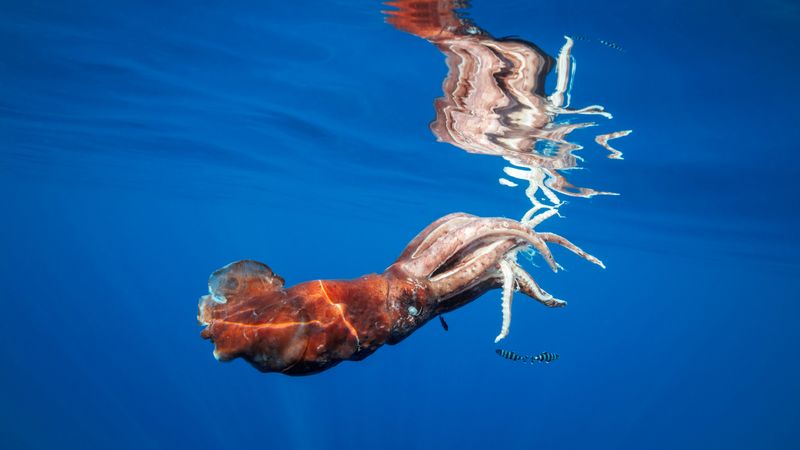
Among the ocean’s most elusive giants, the giant squid captures our imagination with its sheer size and mystery. Known to confront sperm whales in deep-sea battles, this creature remains largely unseen by human eyes. Its tentacles, lined with powerful suckers, extend like an underwater orchestra.
The giant squid’s eyes, the size of dinner plates, allow it to navigate the dark depths with precision. Despite its formidable presence, very few specimens have been studied in their natural habitat. The giant squid serves as an enduring symbol of the uncharted mysteries of the deep ocean.
These fascinating creatures continue to intrigue marine biologists with their elusive nature and remarkable physiology.
Vampire Squid
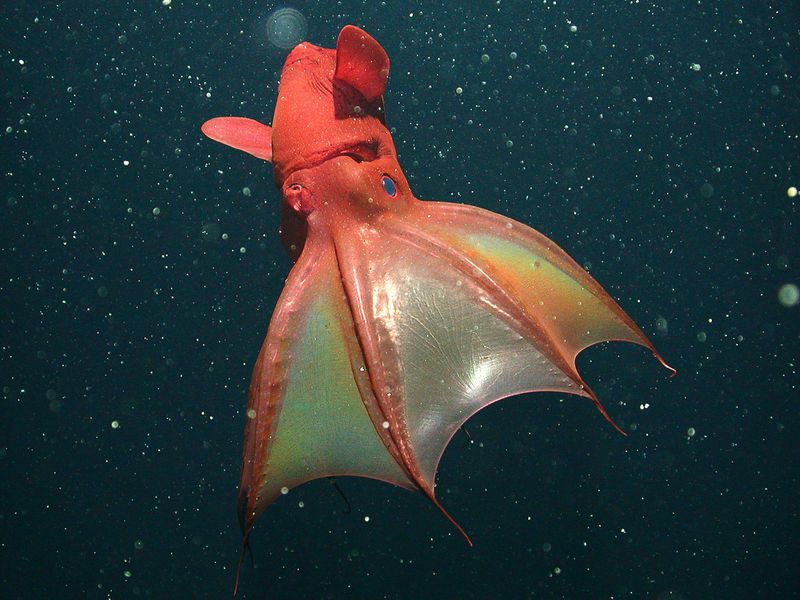
With a name that evokes intrigue, the vampire squid is a master of deception. Unlike its fearsome title, it poses no threat to humans. Its cloak-like webbing and glowing red eyes create an eerie presence in the ocean’s depths.
This creature thrives in oxygen-minimal environments, showcasing remarkable adaptations. Its bioluminescent displays are both defensive and mesmerizing. The vampire squid’s diet consists mainly of marine detritus, making it an efficient scavenger.
This enigmatic creature demonstrates nature’s ability to adapt and survive in the most extreme conditions, capturing the curiosity of ocean explorers and researchers alike.
Frilled Shark
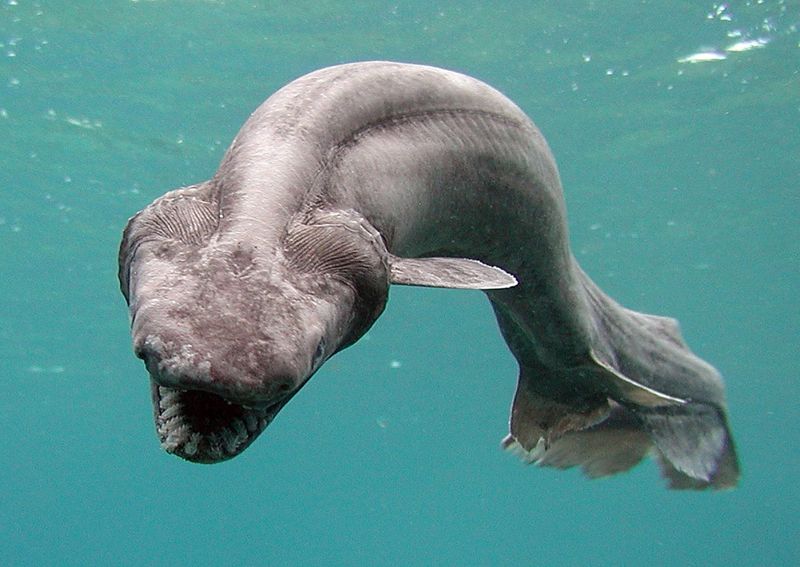
A living fossil, the frilled shark is a testament to the ocean’s primordial past. Resembling an eel, its body is elongated and adorned with frilly gills, giving it a unique appearance. Its mouth, equipped with multiple rows of needle-sharp teeth, is a formidable sight.
Dwelling in the ocean’s twilight zone, this shark hunts its prey with swift, snake-like movements. Despite its fearsome look, it presents no danger to humans. The frilled shark continues to fascinate scientists with its ancient lineage and unusual biology.
Its presence serves as a reminder of the diverse and still mysterious life forms that inhabit the ocean’s depths.
Anglerfish
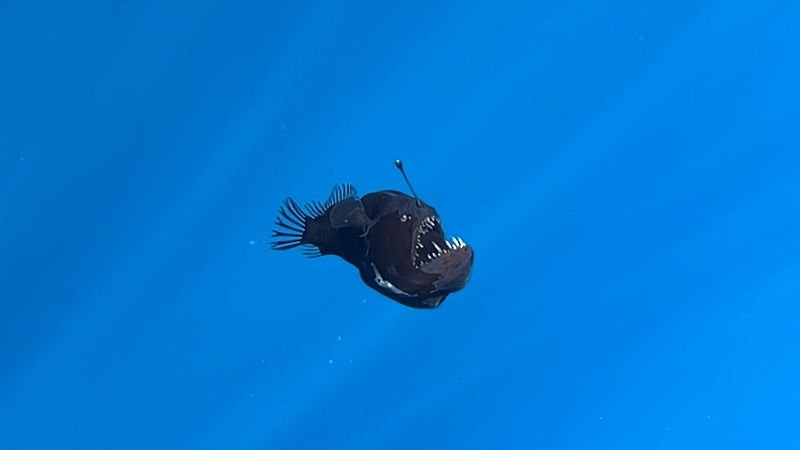
The anglerfish’s grotesque visage and glowing lure make it a quintessential deep-sea predator. Females sport a bioluminescent appendage, attracting unsuspecting prey in the pitch-black depths.
This solitary hunter is a marvel of adaptation, using its light to lure and capture food. Its mouth, filled with razor-sharp teeth, ensures that any prey caught in its grasp rarely escapes. Despite its menacing appearance, the anglerfish’s small size and solitary nature pose no threat to divers.
Its unique reproductive strategy involves males fusing with females, a bizarre yet efficient method for survival in the vast ocean.
Goblin Shark
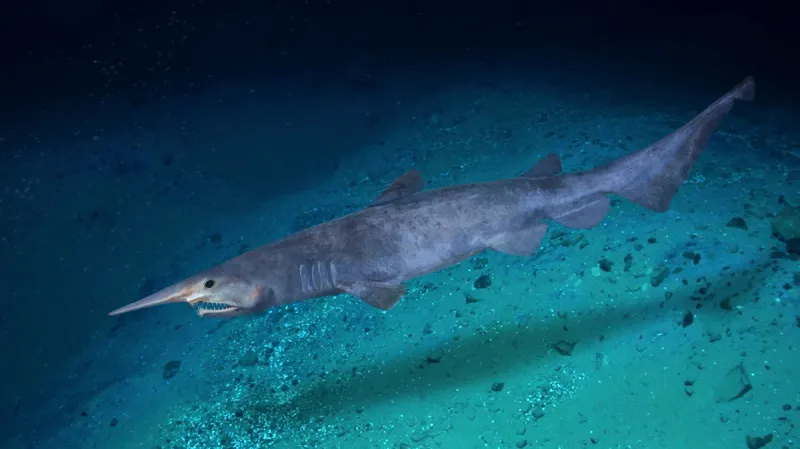
With a face only a mother could love, the goblin shark is the ocean’s own living fossil. Its long, flattened snout and protruding jaws give it a distinctive appearance. Rarely seen by humans, this deep-sea dweller uses its electro-sensitive organs to locate prey.
When hunting, its jaws extend dramatically, a spectacle of nature’s ingenuity. Despite its fearsome look, the goblin shark presents no threat to humans. Its slow-moving lifestyle is an adaptation to the sparse resources of the deep ocean.
This intriguing species provides insights into the evolutionary history of sharks and their deep-sea adaptations.
Fangtooth Fish
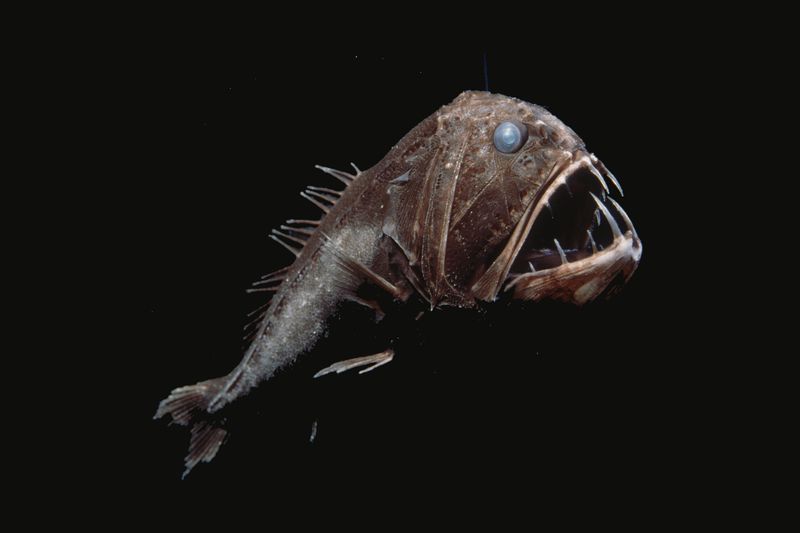
The fangtooth fish, despite its small stature, is armed with fearsome teeth. These oversized fangs are the largest in proportion to body size of any fish, giving it an intimidating appearance. Dwelling in the deep sea, it navigates the dark with acute senses.
In reality, fangtooth fish are harmless to humans and pose no real threat. Their formidable teeth are used to ensnare slippery prey. The fangtooth fish’s unique adaptations for life in extreme environments captivate researchers.
This small but fierce creature exemplifies the unexpected wonders found in the ocean’s depths, where every adaptation has a purpose.
Black Dragonfish
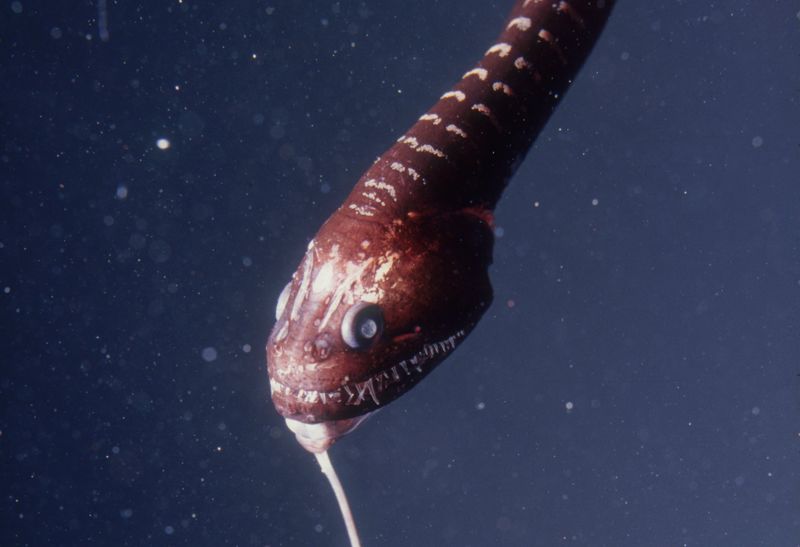
Sleek and sinister, the black dragonfish glides through the ocean’s inky depths. Its slender, black body is nearly invisible in the dark waters, while its bioluminescent barbs emit an otherworldly glow.
This predator relies on its light-producing organs to attract prey, showcasing an extraordinary adaptation. The black dragonfish’s mouth, lined with sharp teeth, is designed for gripping elusive prey.
Despite its fearsome appearance, this species is small and poses no danger to humans. The black dragonfish represents the mysterious beauty of deep-sea life, where light and darkness coexist in a delicate balance.
Deep-sea Jellyfish
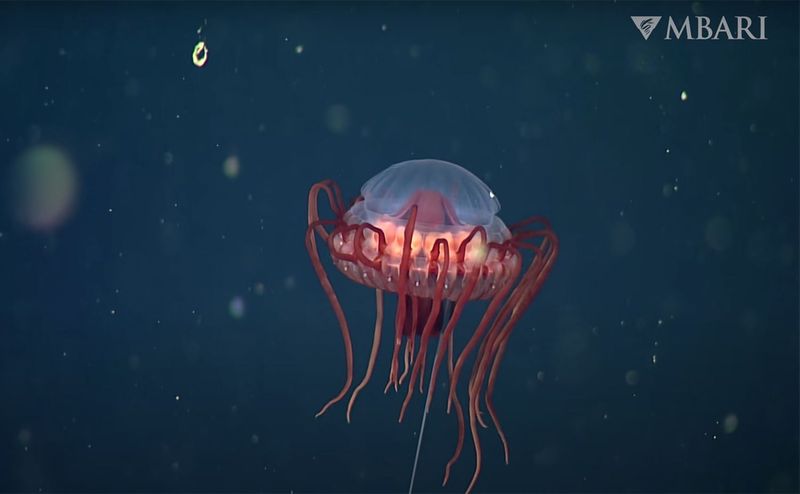
Graceful and ethereal, the deep-sea jellyfish drifts through the ocean’s depths. Its translucent body, adorned with luminescent patterns, creates a mesmerizing display.
This jellyfish thrives in the deep, where its bioluminescence serves both as a defense mechanism and a lure for prey. Its long, flowing tentacles capture unsuspecting organisms in the darkness.
Despite their delicate appearance, deep-sea jellyfish are adapted to survive in harsh environments. They epitomize the ocean’s beauty and complexity, where even the simplest creatures possess extraordinary adaptations for survival.
Barreleye Fish

The barreleye fish is a marvel of evolution with its transparent head, through which it views the world. This unique adaptation allows it to capture light from above while watching for predators below.
Its tubular eyes rotate within its head, providing the fish with a wide field of vision. Despite its unusual anatomy, the barreleye fish is an adept hunter in the deep sea.
This species’ remarkable adaptations have fascinated scientists for decades, offering insights into how life can thrive in the ocean’s darkest regions. The barreleye fish exemplifies the ingenuity of nature’s designs.
Dumbo Octopus
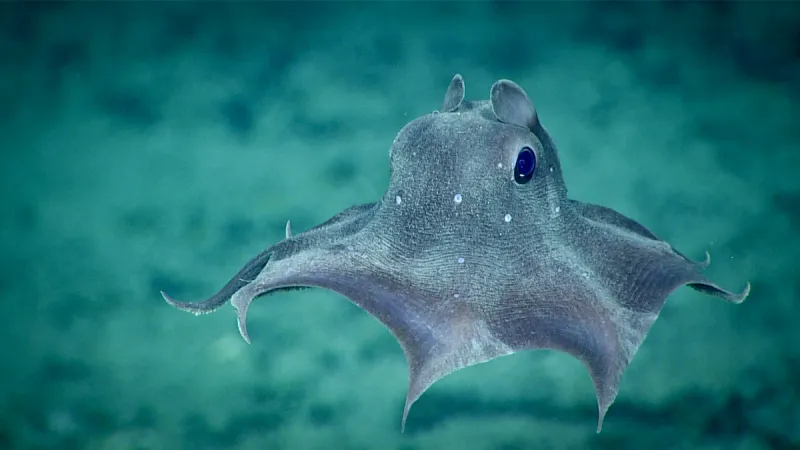
Named after Disney’s flying elephant, the dumbo octopus enchants with its ear-like fins. These deep-sea dwellers use their unique appendages to navigate the ocean floor with grace.
Unlike most octopuses, the dumbo octopus lives at great depths, where it glides effortlessly in search of food. Its soft, gelatinous body aids survival in the extreme pressure of the ocean’s abyss.
Despite its whimsical appearance, the dumbo octopus is a skilled predator, feeding on small crustaceans and worms. This charming creature showcases the playful side of nature’s adaptations in the deep.
Colossal Squid
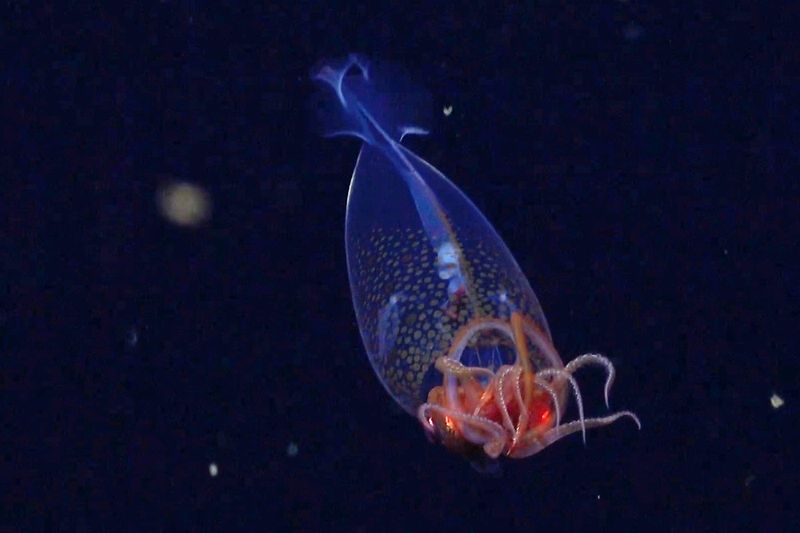
A creature of legends, the colossal squid is the largest known invertebrate, rivaling the giant squid in size. Its massive eyes, the largest in the animal kingdom, help it detect faint light in the deep sea.
Unlike its giant cousin, the colossal squid has a heavier build and swiveling hooks on its tentacles, which it uses to grasp prey. This formidable predator remains a mystery, with only a few specimens ever studied.
The colossal squid serves as a reminder of the ocean’s vast unknowns, where giants roam unseen in the dark, icy depths.
Gulper Eel
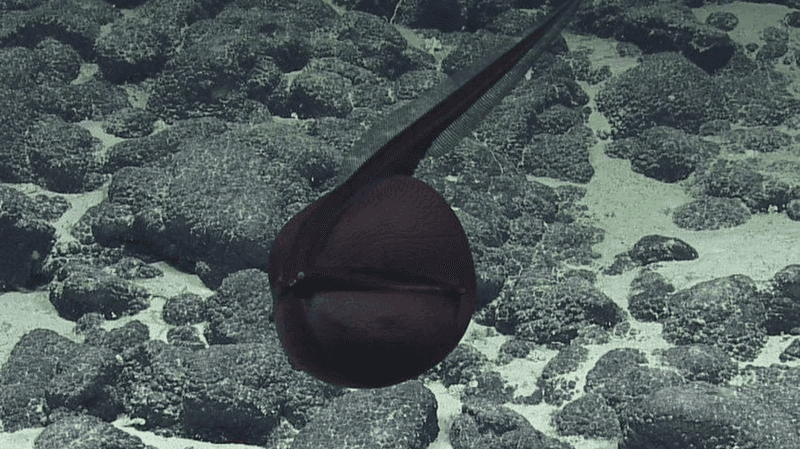
The gulper eel captivates with its unusually large mouth, capable of engulfing prey much larger than itself. This remarkable feature allows it to thrive in the resource-scarce deep sea.
Its long, whip-like tail aids in propulsion, while its bioluminescent lure draws prey closer. The gulper eel’s mouth and stomach can expand significantly, accommodating various prey sizes.
Though its appearance may seem bizarre, the gulper eel is a master of survival, illustrating the creativity of evolution. This peculiar creature adds to the ocean’s mystique with its extraordinary adaptations.
Sea Cucumber
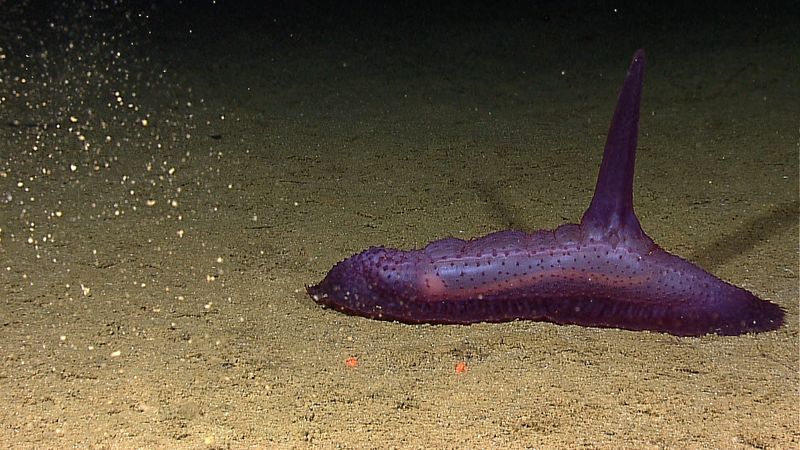
The sea cucumber, though unassuming in appearance, plays a crucial role in marine ecosystems. With its leathery body and tube feet, this creature traverses the ocean floor, consuming detritus and recycling nutrients.
Despite its seemingly simple lifestyle, the sea cucumber possesses a remarkable defense mechanism: it can expel its internal organs to deter predators, regenerating them later.
This unique ability, along with its ecological importance, makes the sea cucumber a fascinating subject for study. It embodies the interconnected nature of ocean life, where even the humble contribute significantly to the ecosystem’s balance.
Yeti Crab
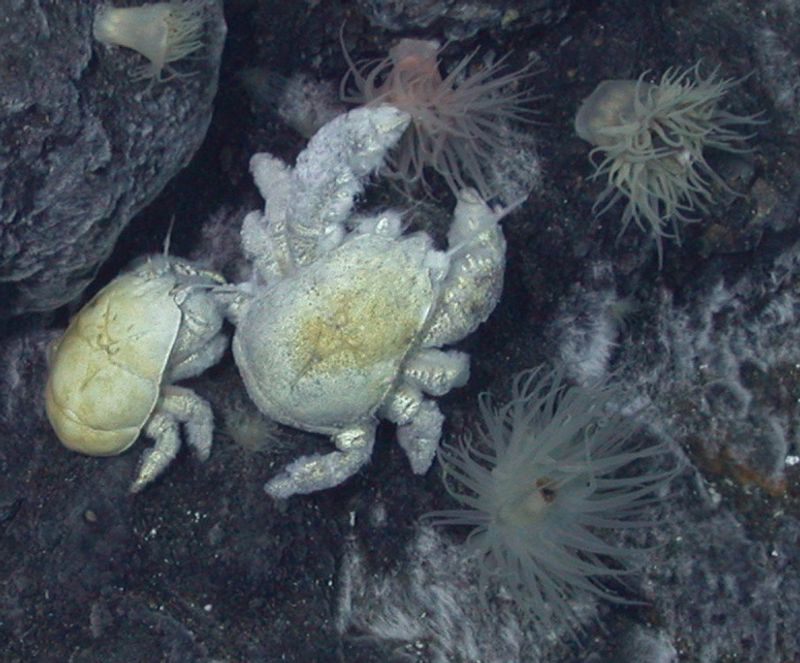
Discovered near hydrothermal vents, the yeti crab intrigues with its hairy pincers, reminiscent of mythical creatures. These appendages harbor bacteria, which the crab farms as a food source.
Living in extreme environments, the yeti crab showcases nature’s resilience and resourcefulness. Its symbiotic relationship with bacteria allows it to thrive where few others can.
The yeti crab’s mysterious existence near deep-sea vents underscores the diversity and adaptability of life in the ocean’s most inhospitable regions. It serves as a reminder of the ocean’s untapped potential and the wonders yet to be uncovered.

